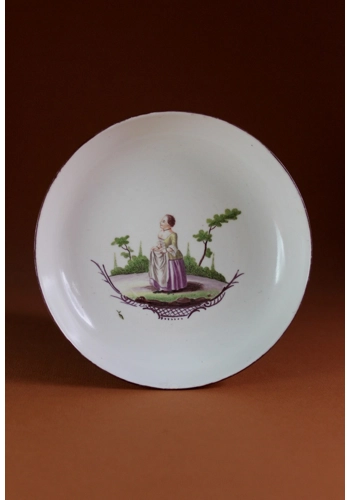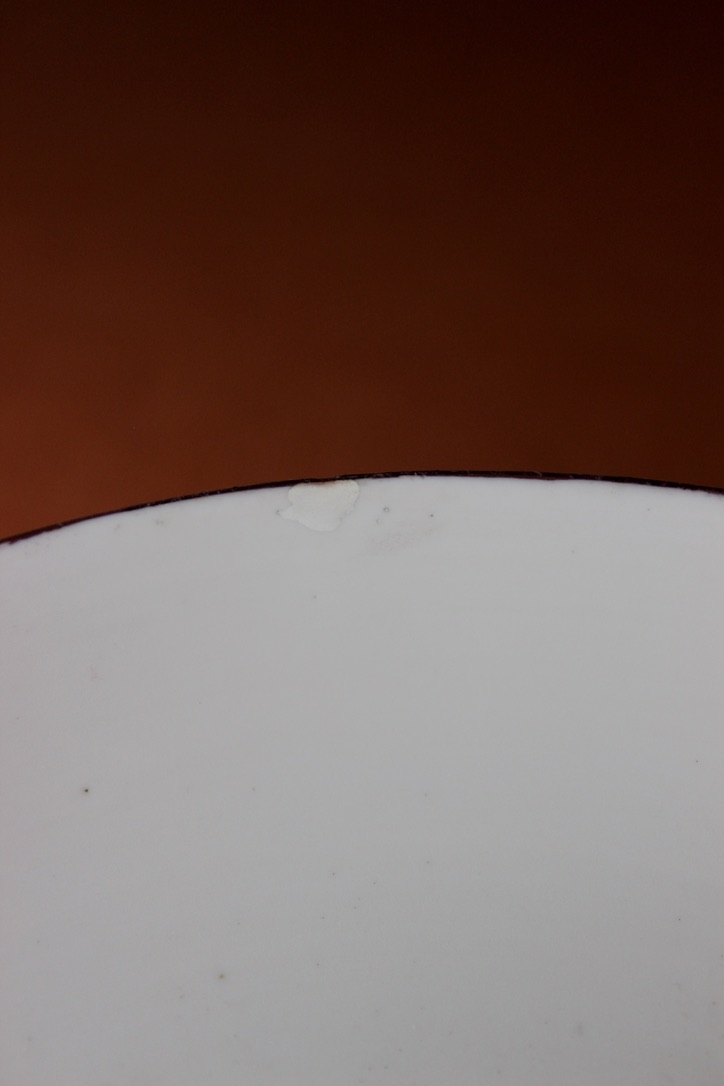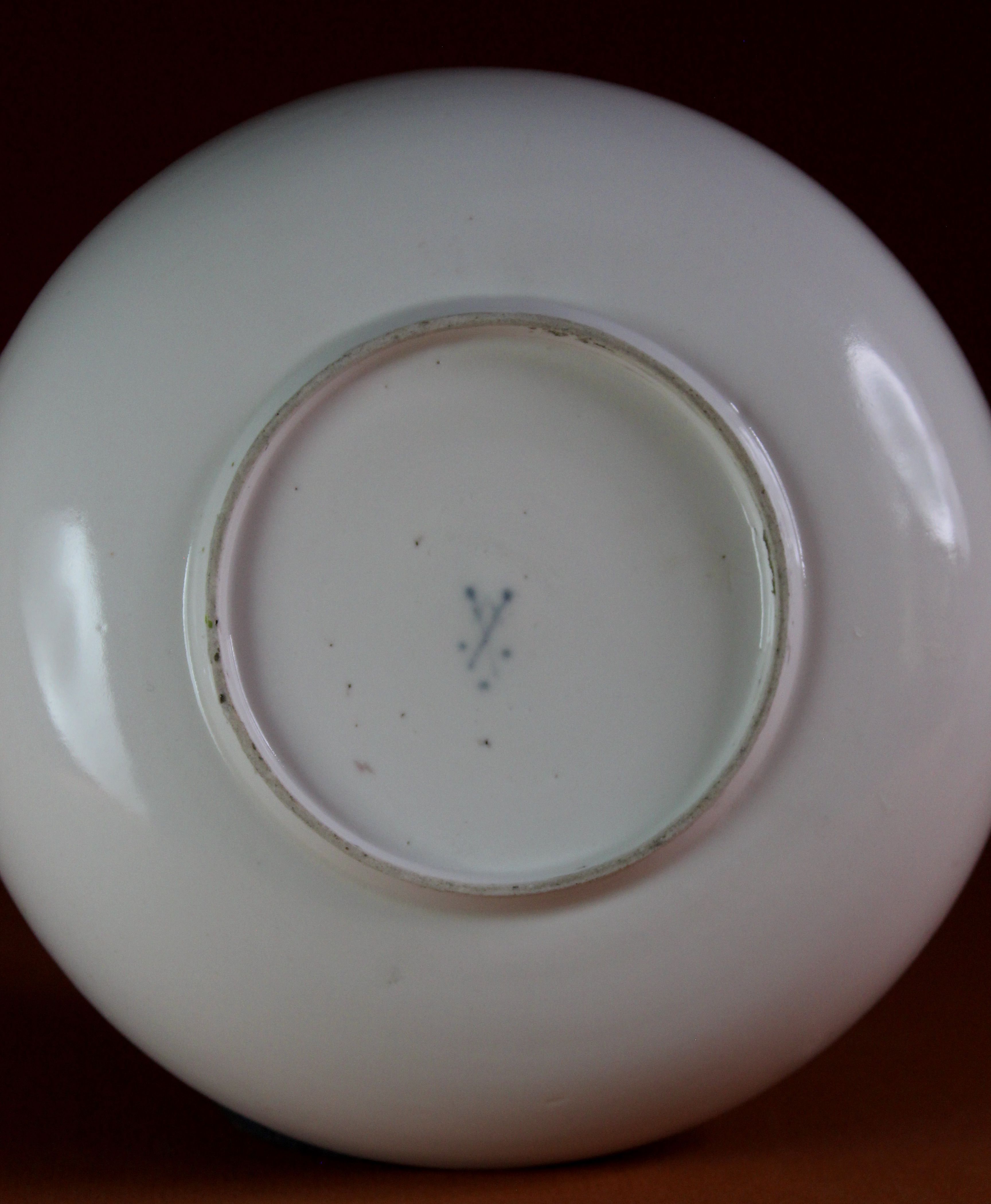SOLD Weesp Saucer
£650.00 inc. tax
A very rare piece of porcelain made at the Weesp facory somewhere between 1760 and 1768. The paste has a very creamy warm colour unlike some of the German hard paste, and the glaze has a softness. It is delicately decorated with a woman holding her skirts up as she walks in the garden. Some hedges bushes and trees in the background, the whole scene framed at the bottom by a latice.
The curve of the sides is steep and the foot narrow and finely finished. On the bottom an underglazed mark for the Weesp factory.
Weesp was the first porcelain to be made in Holland and so this is an example of some of the earliest Dutch porcelain.
The original Initiator of the porcelain factory in Weesp was the Englishman (or Scottsman - that is unknown) Daniel MacCarthy who in 1757 found some merchants willing to invest in the installation of a porcelain furnace in a former juniper distillery in the center of Weesp.
Unfortunately, despite an investment of the huge amount of 16,508 guldens at that time, the project failed after a couple of years leaving no known examples of work or factory wasters.
The curve of the sides is steep and the foot narrow and finely finished. On the bottom an underglazed mark for the Weesp factory.
Weesp was the first porcelain to be made in Holland and so this is an example of some of the earliest Dutch porcelain.
The original Initiator of the porcelain factory in Weesp was the Englishman (or Scottsman - that is unknown) Daniel MacCarthy who in 1757 found some merchants willing to invest in the installation of a porcelain furnace in a former juniper distillery in the center of Weesp.
Unfortunately, despite an investment of the huge amount of 16,508 guldens at that time, the project failed after a couple of years leaving no known examples of work or factory wasters.
However, the factory was reopened by Bertram Philip Sigismund Albrecht, Count of Gronsveld-Diepenbroick-Impel.
After some start-up problems, the factory finally managed to produce high quality porcelain in the then popular Rococo fashion around 1760. In addition, due to some issues at the Sevres facory in this period there were a few very well trained expert porclain enamelers looking for work who were employed by the new Weesp factory and who provided some high quality decoration.
Unfortunately, the factory did not last long and the unfavorable competition within Europe led to a search for a buyer.
At first it seemed Sèvres might take it on, but after the negotiations with the potential French investors broke down, it was decided around 1768 to close the factory.
The Count died unexpectedly in 1772, leaving his wife, three sons and two daughters in financial worrying circumstances.
At first it seemed Sèvres might take it on, but after the negotiations with the potential French investors broke down, it was decided around 1768 to close the factory.
The Count died unexpectedly in 1772, leaving his wife, three sons and two daughters in financial worrying circumstances.
Parts of the inventory of the former factory in Weesp were purchased a few years later by the Loosdrecht priest Johannes de Mol and that eventually led to the production of Loosdreicht porcelain.
Makers marks:
Weesp mark, crossed swords with dots in underglaze blue
Dimensions:
140 mm diameter at the rim
Weight:
135 g
Age:
260
Condition:
Very good antique condition. A small 3mm rim chip which has been filled and the brown edge reinstated. This has been done as a visible repair with no over spraying of colour or cold glaze.
Maker:
Weesp
Product Code:DK58qyL
Units in Stock:0
weight:135.0g
Brand:Weesp
Product Condition: Used

Updating Order Details
Please do not refresh or navigate away from the page!
No Reviews Posted Yet - be the first!













